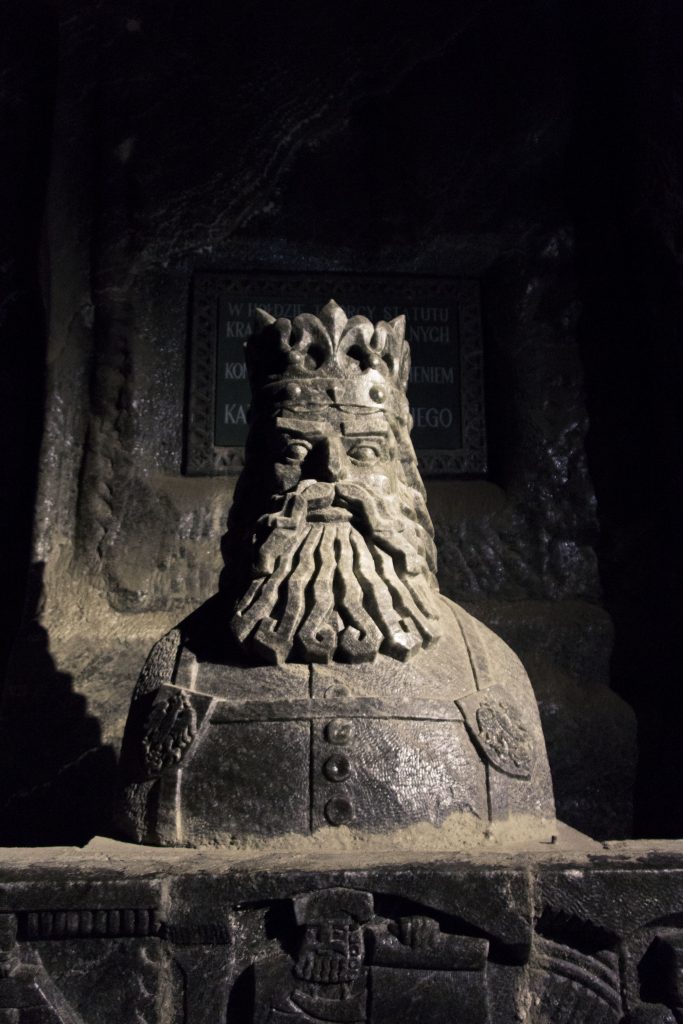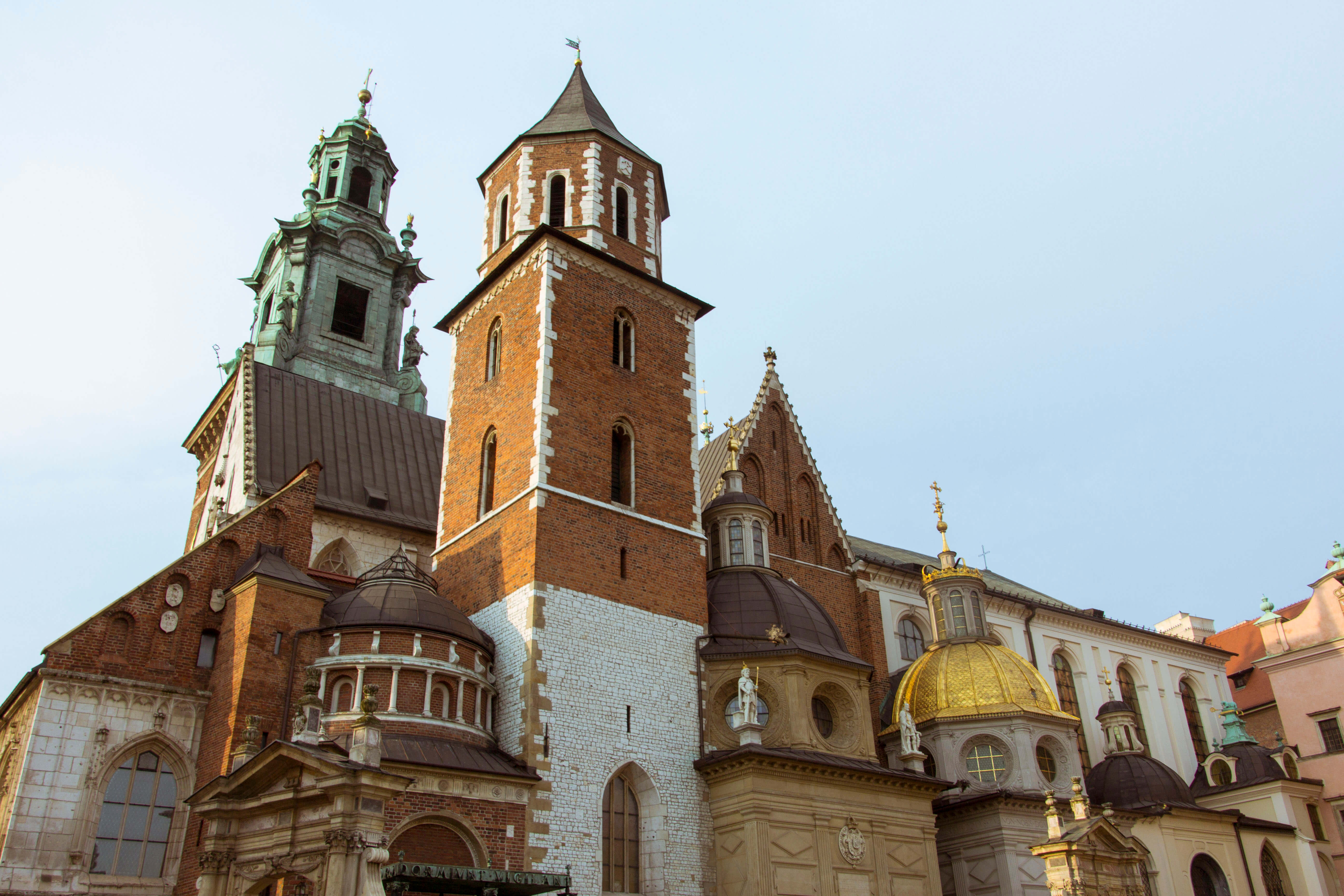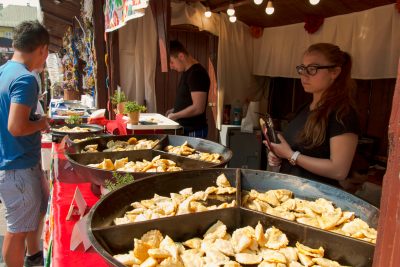I could not have arranged my time in Krakow any better if I tried. I’m someone who lives to eat and I managed to be in Krakow during the annual Pierogi festival. Pierogi are small dumplings with fillings like meat, vegetables or fruit that are widely considered to be the national food of Poland. The festival (held every year on the day of St. Hyacinth) provides an opportunity for the local restaurants to show off not only their skill in preparing traditional fillings but also their inventiveness with different flavours.
I joined locals, tourists and a fair few nuns to explore the festival and eat myself sick. As well as the popular staple pierogi ruski filled with potato and cheese I also tried rose and plum; Mexican; chicken liver and peach; and the quite bizarre duck, lemongrass, fig and basil pierogi. The festival offered more than just pierogi though. I enjoyed oscypek, a smoked sheep’s cheese, which had been grilled and served with bacon and dried prune, as well as boiled bagels, rich meaty soup, bread with lard and a shot of vodka served with its traditional chaser of pickled herring.
Eastern Europe is renowned for its stodgy food but the mild stomach pain from overconsumption was well and truly worth it. The challenge will now be to track down suitably high quality pierogi back home!
I also made an effort to see some of the things surrounding Krakow, including the remarkable Wielicza salt mine, often called the “underground salt cathedral of Poland”. The mine was initially built in the 13th century and was in continuous operation under the same company until 2007. What makes the mine truly remarkable is the carvings and spaces inside it. As well as the famous underground chapel there’s a ballroom, various caverns and grottos, carvings of historical and religious figures and even chandeliers made from purified salt crystals. There was a wedding taking place when we visited and it certainly made for an impressive venue.





Unfortunately, Krakow also has a rather dark past, as evidenced by the Jewish ghetto, Schindlers factory and the Auschwitz and Birkenau concentration camps located just outside the city. It’s hard to put into words the sense of hopelessness that the camps convey even now, decades after their closure. The Poles make sure that what happened there can never be downplayed, forgotten or repeated and they were very quick to shut down even the slightest suggestion of Holocaust denialism.




While I had lovely weather for my first afternoon at the Pierogi festival, the rest of my time in Krakow was rather gloomy and it made it difficult to fully appreciate the city’s architecture. One thing that was particularly bizarre was Wawal Castle. As every subsequent ruler added, altered or amended the building it hs now become of the most architecturally confused buildings I’ve ever seen.

Krakow was a fun few days and while my quest for good food side tracked me for the better part of an afternoon, I think it was well worth the detour. None the less, I’d love to return at some point and see more of Krakow and the rest of Poland.




Mary Kenny October 21, 2015 at 8:35 am
Lovely to catch up again Lucy.
Well done
Mary